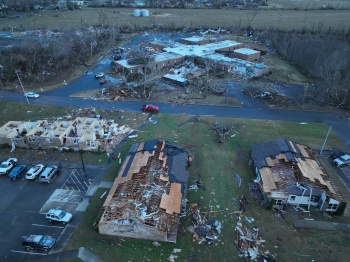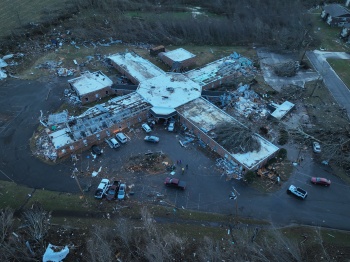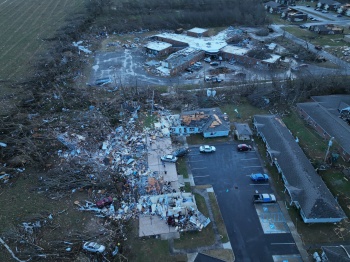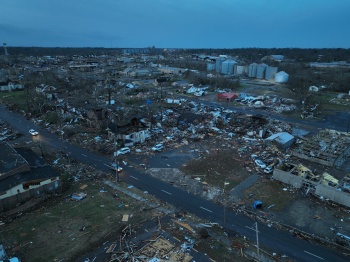The governor of the US state of Kentucky has warned that more than 100 people are thought to have been killed by tornadoes overnight.
Andy Beshear said the figure could rise to as many as 200 in what he called the worst tornadoes in the state's history.
Dozens are feared dead inside a candle factory in the town of Mayfield.
At least five people died as tornadoes wreaked havoc in other states, including one in an Amazon warehouse in Illinois.
Mr Beshear has declared a state of emergency in Kentucky.
More than 100 people were inside the Mayfield factory when the tornado hit, he said.
"We believe we'll lose at least dozens of those individuals," the governor added.
Police said the tornado caused "significant damage" across the western parts of the state. A train was derailed during extreme winds in Hopkins County, Sheriff Matt Sanderson told WKYT-TV.
He also described how two children were reported missing during a tornado but were then found in a bathtub that had been pulled outside by the force of the wind.
"There were two children in the Barnsley area that were missing and they were actually found in a bathtub not where the house was originally standing," he said.
The Amazon warehouse in Edwardsville in southern Illinois was damaged during a tornado on Friday night, the authorities said.
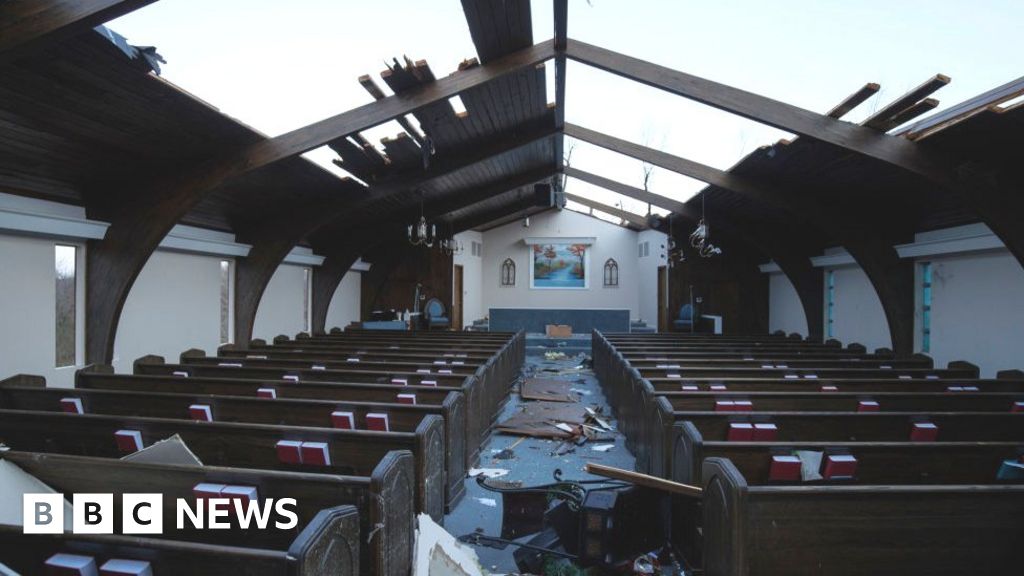
More than 50 feared dead in Kentucky's worst ever tornadoes
The governor of the US state says that the number of victims could rise to 100.
www.bbc.com

